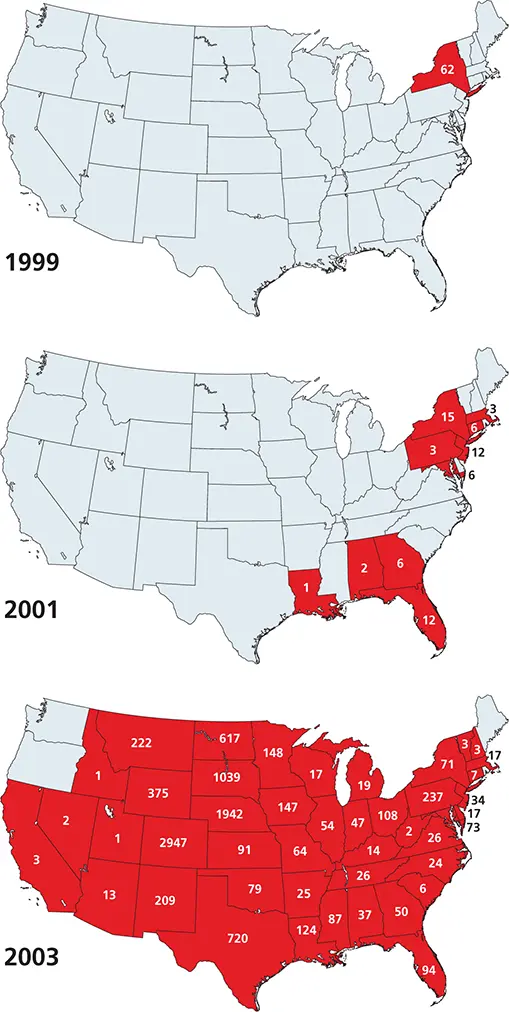S. Jane Flint - Principles of Virology, Volume 2
Здесь есть возможность читать онлайн «S. Jane Flint - Principles of Virology, Volume 2» — ознакомительный отрывок электронной книги совершенно бесплатно, а после прочтения отрывка купить полную версию. В некоторых случаях можно слушать аудио, скачать через торрент в формате fb2 и присутствует краткое содержание. Жанр: unrecognised, на английском языке. Описание произведения, (предисловие) а так же отзывы посетителей доступны на портале библиотеки ЛибКат.
- Название:Principles of Virology, Volume 2
- Автор:
- Жанр:
- Год:неизвестен
- ISBN:нет данных
- Рейтинг книги:3 / 5. Голосов: 1
-
Избранное:Добавить в избранное
- Отзывы:
-
Ваша оценка:
- 60
- 1
- 2
- 3
- 4
- 5
Principles of Virology, Volume 2: краткое содержание, описание и аннотация
Предлагаем к чтению аннотацию, описание, краткое содержание или предисловие (зависит от того, что написал сам автор книги «Principles of Virology, Volume 2»). Если вы не нашли необходимую информацию о книге — напишите в комментариях, мы постараемся отыскать её.
Volume I: Molecular Biology
Volume II: Pathogenesis and Control
Principles of Virology, Fifth Edition
Principles of Virology, Volume 2 — читать онлайн ознакомительный отрывок
Ниже представлен текст книги, разбитый по страницам. Система сохранения места последней прочитанной страницы, позволяет с удобством читать онлайн бесплатно книгу «Principles of Virology, Volume 2», без необходимости каждый раз заново искать на чём Вы остановились. Поставьте закладку, и сможете в любой момент перейти на страницу, на которой закончили чтение.
Интервал:
Закладка:
How West Nile virus arrived in North America will never be known conclusively, but many think that the culprit was an infected mosquito (the natural reservoir) that arrived as a stowaway on a flight from Israel to New York. This scenario was deduced from the remarkable identity between genome sequences of the virus isolated in New York and an isolate obtained from a dead goose in Israel. It is sobering to contemplate that a virus that can now be found in virtually all states and provinces of North America may have begun with a single infected human, or perhaps a mosquito trapped in a suitcase or purse, an invisible passenger on a trans-Atlantic flight.

Figure 1.5 Spread of West Nile virus in the United States. The maps show the spread of West Nile virus from Queens, New York, throughout the country in four years (1999 to 2003). States highlighted in red indicate confirmed human infections (with numbers of confirmed cases). Data from Centers for Disease Control and Prevention.
Zoonotic Infections and Epidemics Caused by “New” Viruses
Viral epidemics often appear unexpectedly, raising questions about their origins. Some viral epidemics begin with a zoonotic infection, discussed in detail in Chapters 10and 11. Zoonosesare infections transmitted from other animals to humans. Many viruses that can infect multiple species establish a reservoir in a host in which the virus causes no disease or only nonlethal disease. When a new host is in proximity to an infected reservoir animal, a species jump may occur. While zoonotic transmission may cause disease in the new host, trans-species infection is usually a dead end for the virus. Consequently, zoonotic infections rarely spread from human to human, as is the case for rabies virus, West Nile virus, and avian influenza. Although relatively rare, zoonotic infections are a concern to epidemiologists, because the human host will not have immunity, and the disease that occurs in the new host may be different (often more severe) than that in the reservoir host. The trans-species spread of a human immunodeficiency virus-like ancestor from monkeys to humans is a prime example of zoonotic transmission ( Chapter 12), as is the likely zoonosis of SARS-CoV-2 from bats to humans.
Over the past few decades, new, or at least newly discovered, zoonotic and vector-borne viral diseases have emerged, many originating in Southeast Asia and the Western Pacific. These include viruses with which most people have little familiarity, including Japanese encephalitis, Ross River, chikungunya, Nipah, and Hendra viruses. While the first three of these are transmitted by mosquitos, the natural reservoir of both Nipah and Hendra viruses is fruit bats, prevalent in Southeast Asia ( Fig. 1.6). As increased contact between animals is the predominant risk factor for trans-species infection, one can envision how changes in the environment or ecosystems of some animals may increase the risk for contact among different species. These changes are of particular concern when humans invade wilderness areas. For example, it is thought that Nipah virus, a paramyxovirus, underwent species-to-species transmission in 1999 in Malaysia, when pig farming began in the habitat occupied by infected fruit bats. The infection spread from bats to pigs and ultimately to the farmers themselves. Hendra and Nipah pose a significant human health threat: in a 2004 outbreak in Bangladesh, Nipah virus killed 60% of the people it infected, and additional out breaks have occurred in almost every year since. Symptoms of infection vary widely: some people experience a transient fever and cough, although complications can include life-threatening inflammation of the brain, respiratory failure, and, following recovery, seizures. Because infection by the virus depends on direct contact with fruit bats or infected hosts, the number of cases is typically low. Nevertheless, as the geographic range of the fruit bat is large, including all of India and much of Southeast Asia, the number of people who could be exposed is enormous. Moreover, it is not necessary to invoke an exotic locale or complex combination of animals for zoonosis to occur; petting zoos, open markets, and state fairs provide sufficient human-animal contact to allow a virus to jump species.

Figure 1.6 Fruit bat geographic range in Southeast Asia, and prevalence of Nipah and Hendra viruses. Outbreaks of Hendra and Nipah virus infections from the late 1990s through 2014 are indicated, as is the geographic range of the Pteropus fruit bat.
The Economic Toll of Viral Epidemics in Livestock
Epidemics affect animals other than humans as well, especially those in dense farming populations. The outbreak of foot-and-mouth disease in the United Kingdom in 2001 caused an agricultural crisis of historical proportions; over 10 million sheep and cattle were killed, an average of 10,000 to 13,000 a day, in an attempt to stop the infection from spreading. As there was no easy way to distinguish infected from uninfected, all of the farm animals in affected areas were destroyed, independent of signs of disease in the livestock. In the 2001 outbreak, the infection could be traced to one pig (the “ index case”) on a specific farm in Northumberland. Unfortunately, the farmer did not inform the authorities of the appearance of foot-and-mouth disease, which is relatively easy to identify by characteristic lesions on the snout, mouth, and feet. The epidemic spread rapidly, accelerated by the use of the same trucks to transport animals from both contaminated and uncontaminated farms to slaughter houses. While this outbreak did not affect humans directly, the indirect financial impact on farming and tourism was enormous; it is estimated that this crisis cost the United Kingdom over $16 billion, and created great stress within the government. A vaccine for foot-and-mouth disease virus exists, and was available at the time. However, vaccine use had been rejected because farmers feared that they would then not be able to ship their meat to other countries, as vaccinated animals cannot be distinguished serologically from infected ones. A positive outcome of this epidemic is that all farm animals in the United Kingdom are now vaccinated for foot-and-mouth disease virus. Nevertheless, agricultural threats remain: while one virus of livestock has been eradicated (rinderpest virus, a relative of measles virus), and some are controlled by vaccines, others, including bluetongue virus, continue to pose a significant threat to cattle, sheep, antelopes, and deer.
Population Density and World Travel Are Accelerators of Viral Transmission
While the thought of an ocean cruise may evoke images of endless buffets and poolside piña coladas, to viral epidemiologists, such pleasure ships appear as prime breeding grounds for viral epidemics. Norwalk virus, a member of the norovirus family, is often associated with cruise ship outbreaks of gastroenteritis resulting in vomiting and diarrhea, although other viruses can also cause these nautical nightmares. Moreover, Norwalk virus is not restricted to ships; hot spots include any place in which many people from various locations are in close proximity for an extended period. Other high-density environments include prisons, airplane cabins, day care facilities, dormitories, and elderly care communities. The risk of transmission is enhanced by the fact that noroviruses are quite hardy, and can be transmitted either person to person or via contaminated food or surfaces, resulting in the need to decontaminate all shared surfaces with chlorine-containing solutions following an outbreak. While the gastrointestinal effects of a noroviral infection are unpleasant, the disease is short-lived, and patients usually recover quickly. However, the frequency with which these outbreaks strike is a chilling re minder that, despite improved tools to characterize viral epidemics and reduce their spread, the ease and prevalence of world travel greatly facilitate the encounter between viruses and new hosts.
Читать дальшеИнтервал:
Закладка:
Похожие книги на «Principles of Virology, Volume 2»
Представляем Вашему вниманию похожие книги на «Principles of Virology, Volume 2» списком для выбора. Мы отобрали схожую по названию и смыслу литературу в надежде предоставить читателям больше вариантов отыскать новые, интересные, ещё непрочитанные произведения.
Обсуждение, отзывы о книге «Principles of Virology, Volume 2» и просто собственные мнения читателей. Оставьте ваши комментарии, напишите, что Вы думаете о произведении, его смысле или главных героях. Укажите что конкретно понравилось, а что нет, и почему Вы так считаете.



